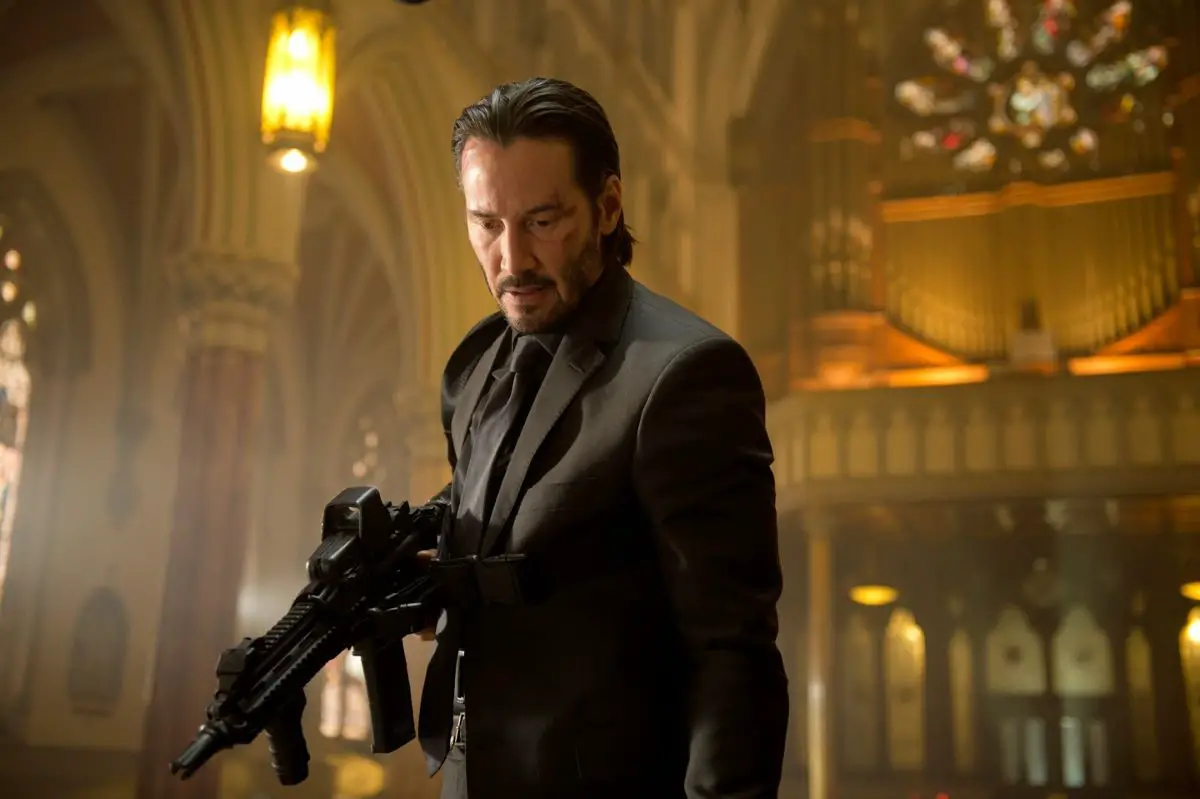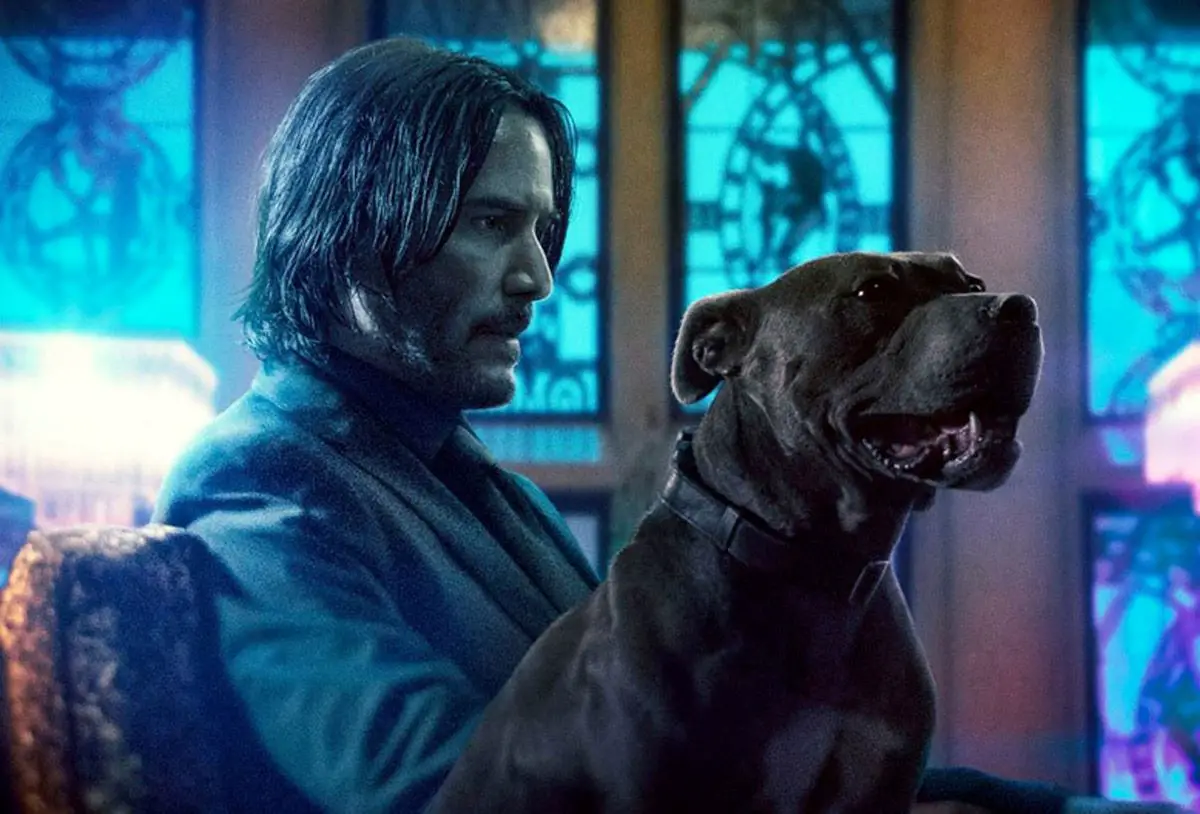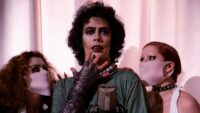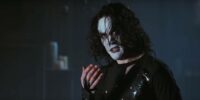A man crashes his SUV into a concrete step. He stumbles out, bloody and battered, and falls to the ground on the verge of death. As a final gesture, he reaches into his pocket and pulls out a cell phone. A cell phone never used for text messages, social media, or even making calls. He watches a short clip of his late wife during happier, simpler times. So begins the saga of John Wick.
Like it or not, it is hard to deny the world took a turn for the worse in 2016. We had Brexit over here in the UK and the rise of Donald Trump in the states. There were multiple celebrity deaths on a scale unprecedented in a single year. It was clear at the midpoint of 2016 that something was changing, there had been something festering in the hearts of people that was suddenly given voice and a face. There was a rise of selfishness, and for want of a better term—casual evil. It became acceptable to talk down to people, to make them feel less than human for being different. Social media was already an omnipresent force by this point, and this became no longer fun way to communicate, rather a toxic breeding ground for apathetic narcissism and callous opinions—a safe bubble for the nastier people out there to control a warped reality fuelled by self-interest and nothing resembling truth.
Since 2016 I have been in a massive fight, broken my first two bones, fractured my pelvis, lost people to death and suicide, battled addiction, struggled with a terrible illness, and been harassed by people with no real cause. Understand that up until 2016, life wasn’t exactly sunshine and rainbows, but there was certainly a lack of enemies, and I didn’t know people who generally wished for harm to come to me. The world has felt so toxic at times that I have often wondered if it was some kind limbo state I was actually living in. It felt weird, like there has been something wrong with the world on a larger scale we couldn’t understand. 2019 has been so awful that when I started writing this in early September, it was as an escape as someone I knew had just committed suicide. When I came back to edit this piece, a mere two weeks later, it was after finding out that someone else I was acquainted with had also taken their own life. That seems to be my 2019 so far, tragedy piling upon tragedy, and rising anger at the confusion and general madness of it all.
In this age of darkness, one thing has been a constant comforting presence—the John Wick movies. Since the first film was released, followed by the sequel in 2017, I have gone back to these movies again and again. It was only with the release of the third chapter in May 2019, where I started to realise exactly what it was that kept me coming back to them. The films have been incredibly cathartic for me through the last few years. Obviously, I cannot go around shooting people in the head, and so watching Keanu do it is the next best thing.

When we first meet him, John Wick is a man grieving his wife. A woman who changed his life for the better, gave him hope and a purpose, a woman who was cruelly taken from him by fate. As a final act of kindness, John’s wife leaves him with a gift. A puppy dog is sent to him with a last message—something for John to hold on to and care for. The grief will never go away, but there is again hope in his life. Until that is, John meets an entitled and spoiled young man at a gas station. The kid offers to buy his car; John says it’s not for sale and leaves. Later the kid comes back and steals the car anyway, but he also kills the puppy in an act of needless cruelty.
What they don’t count on is that John Wick used to be a somebody. The entitled kid’s father and employees know the mistake that has been made. John Wick was “The Baba-Yaga”, an underworld boogeyman of epic proportions, the killer of all killers. Wick has been crushed and wronged, and he isn’t going to take it lying down. He heads back into his old life, back to the modern world, here represented by an industry of killers with their own currency and laws. Never has the resulting violence felt so cathartic or justified in an action movie. The underworld’s reactions to Wick coming to get them are all disbelief, begging and self-justification. People were literally pushing loved ones in the way of the beast to save themselves. John is seeking justice, and the criminal’s response to this is to try and kill him.
In order to understand a lot of the themes of the John Wick trilogy, it’s perhaps pertinent to know a bit more about its main star Keanu Reeves. The problem is the man is kind of an enigma; he has largely managed to keep his private life private up until his recent resurgence. Now he is seemingly a major win for the paparazzi once again thanks to the box office success of the John Wick franchise and tales of his genuine kindness being exposed for all to see in the world of social media memes and hashtags. What we do know is that Reeves has experienced a lot of tragedy in his life. He had a mostly absent father, his sister struggled with leukaemia, and he lost his first child at the end of the ’90s. Tragically he then lost his ex-girlfriend and mother of the child Jennifer Syme in a car accident. Going through this kind of thing isn’t easy at the best of times, going through it when you are one of the most famous people in the world and people spy on you all the time must be even more difficult.
It feels like Reeves must have identified with John Wick as a character. A man who wants space to grieve his wife and try to stay a semblance of the man she fell in love with, and keep the sense of redemption that the dead woman provided. His life and his past, of course, can’t stay buried and comes back to bite him in the end when he feels a simple human need for vengeance. The modern world with all its rules, grudges and entitlements, intrudes on his solitude. The man isn’t given a chance to process his grief and remain a real person. The person the world made John Wick into comes back into sharp focus, and his fate is set.

The criminal underworld represents the modern world in the John Wick franchise. It has its own puzzling currency (physical bitcoin?) and its own rules in terms of where business can be conducted. It has its hierarchy behind the scenes that we learn more about as the films go on. The underworld is made up of several self-interested people to whom Wick’s quest and the rules mean nothing if it gets in the way of their progression in life. It’s interesting to note that aside from the memorial video, John Wick doesn’t use a cell phone throughout these films. And his one “ally” represented by the Bowery King (Laurence Fishburne), also rejects this in favour of carrier pigeons, which he refers to in the third film as “his internet” when confronted by a preening lacky of the authorities.
The second film finds Wick finishing off his quest in the first movie by retrieving his car. Once the mission is complete, Wick returns to his life, once again seemingly done with his past and the modern world. Except that the past and the world isn’t done with Wick. It returns in the form of Santino D’Antonio, a sub-boss in the Italian branch of the “the high table.” Santino enabled Wick to get out of the modern world in the first place by the completion of a job and initiation of a marker, meaning that Wick owes him a debt. What Santino wants is very much emblematic of many of the problems in the world today. His sense of entitlement means that he now wants Wick to kill his own sister so that he can then assume the position at the top of the crime syndicate. Wick practically begs Santino to take back the marker, Santino clearly, like so many, doesn’t understand the word “no” and so blows up Wick’s house and sanctuary.
Wick reluctantly does the job and of course is then double-crossed, and what follows is an hour and a half of the most kinetic action filmmaking since the Bourne trilogy. Wick and in turn Reeves playing Wick is pushed to the limits. We get to see once again, and in greater pencil related detail, just what made Wick such a legend in the underworld. Wick as a character is taken right to the edge, and as we proceed through masses of death and carnage, it becomes clearer what is happening. We are watching a man slowly being consumed by the modern world with all its selfishness and toxicity. He is fighting for his very life against the entitled masses. As he fights his way through an art gallery towards the end of the second film, a voiceover somewhere on the soundtrack warns him “you are now entering the destruction of the soul.”
In a fit of rage Wick ends up murdering Santino on the grounds of The Continental. A huge no-no in this world, this means he is marked for death by the modern world. Wick flees at the end of the sequel as cell phones go off all around him. The modern world is informed of his existence, and his death suddenly being worth a lot of money.

Ultimately the John Wick films are the story of a simple man with simple needs, a man who wants to be left the fuck alone. All Wick wants from life is peace and quiet; he just has to kill a lot of people to get there. Wick made the mistake of living too close to his old life. What he really needed to do was find a desert island somewhere, the modern world will always come calling if you are never far enough away. In a sense, Wick is an avatar of a modern man just trying to find some peace in a world full of noise, a realm of chaos with nothing but vain self-interest and toxicity.
John Wick 3 – Parabellum, in which the sub-title hammers the message home, picks up directly at the end of Chapter Two, with Wick on the run. The action here is non-stop; they even manage to up the pace on the second movie with death by book, horse, sword and motorcycle. Wick’s fight against the modern world steps up a gear. Wick is hunted by an assassin played by the great, underrated Mark Dacascos who is also a very complimentary fanboy of Wick. Still, all the compliments in the world don’t change the fact that he still wants Wick dead. A turn at the end sees Wick team up with Winston, the manager of The Continental (whose house he violated at the end of Chapter Two) to fight off the hordes of the High Table being sent to kill them both. Again, of course, modern self-interest kicks in as Wick is used and double-crossed when it seemed he was finally about to achieve some kind of peace, either by killing literally everyone or dying himself doing what he deemed was right.
When I saw Parabellum, I had just come to the end of something. I had finally closed the book on something that had been troubling me, but I didn’t realise that stupid pride was about to kick in at those who had wronged me. If 2019 has taught me anything, it’s that you just can’t tell anyone they are wrong anymore, it will come back on you tenfold. I remember being very puzzled walking out of John Wick 3, and it wouldn’t become apparent until another viewing what it was that was troubling me.
When Wick teams up with Winston to defend the Continental, Winston appeals to his desire for peace and redemption by suggesting that Wick has a choice. Wick can go out as the person his wife thought he was by standing up for something, or he can remain the monster the underworld believed him to be. Wick goes for the redemptive path and is double-crossed and left for dead for his efforts. That first viewing I felt the ending was a letdown. It appeared to be closing things out in a satisfying character arc across three movies, but then went for the open ending to lead into yet another sequel of likely diminishing returns.
It was only with the follow up viewing of the film that the ending made total tragic thematic sense. Wick is pissed off at the end of the third film, and with good reason. He has been the victim of yet more narcissistic manipulation. Wick has been pursued relentlessly through our modern world, has lost a finger, and been stabbed in the back by the very systems he used to be a part of and tried to leave behind. All he has tried to do is find space to grieve and live the quiet life. The sad fact is at the end of Parabellum Wick is in full Baba-Yaga mode, the modern world has won and consumed him. The path he will go down now is one of matching the toxic awfulness of contemporary society on its own, possibly worse terms.

Between 2016 and 2019, I sadly became acutely aware that evil exists in the world. In 2019 hatred and anger at people I once called friends and family have threatened to consume me, and they are far more damaging emotions than grief and sadness. There was then thankfully a time of respite when I feel like I was over the worst of it, but then a period of paralysis after yet another injury caused two weeks of the worst introspective hell and thinking on my experiences. I feel like I peered into an abyss and was faced with the choice of becoming something I hated or walking away; I chose to walk away. It took me a while to see that my anger at the world had meant I had been behaving in a very self-destructive way, and it had damaged longer-term relationships I still valued.
I believe I am now over the worst of my ordeals, I lay bloody and bruised after my fall, but not entirely broken. The experience has made me stronger overall, but with an overwhelming need for peace and quiet. This period of darkness has to come to some sort of conclusion, and I won’t let tragedy ruin my life anymore. The decision to reject the modern world, and all its need for constant attention and communication is not an easy one, but sometimes a necessity. If you don’t understand something and it doesn’t engage in real-world terms of right and wrong, then you have to cast it aside. To not become a monster sometimes takes everything we have, and I hope that eventually, much like John Wick, I can find the space to grieve the events of the last four years and come to some kind of peace.


